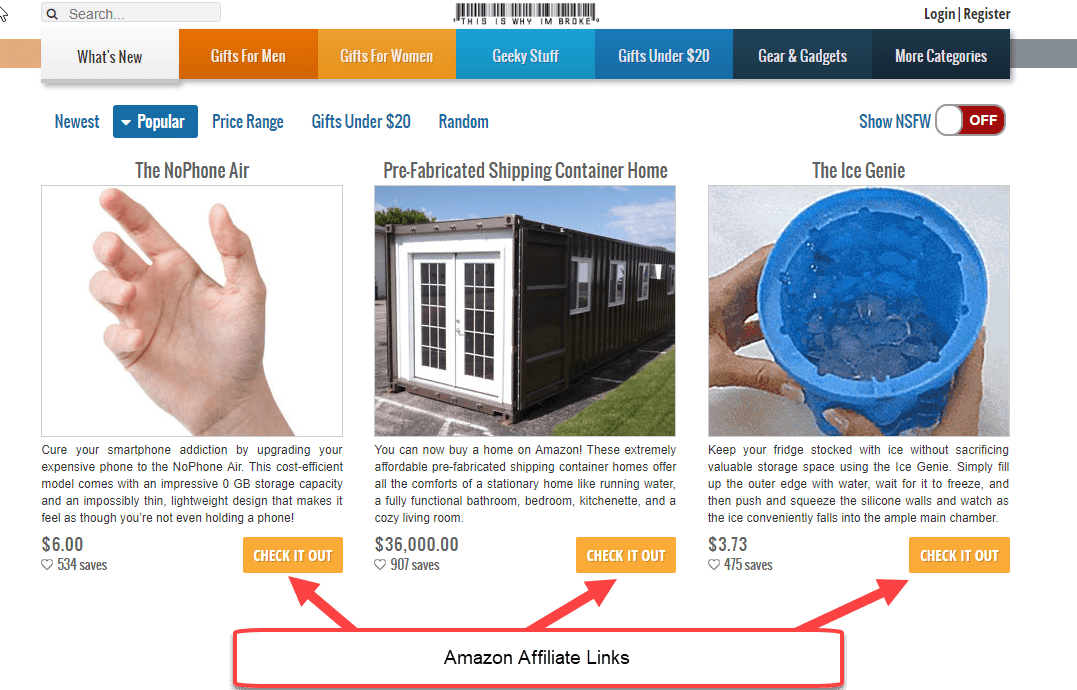Affiliate marketing has become huge in this day and age. Between social sites and the popularity of online posts, affiliates have various platforms to work from.
In fact, many professional bloggers use affiliate marketing as their way of generating revenue. Many affiliates have found that it is pretty easy to sell a product for someone, rather than create their own products to sell.
What is affiliate marketing?
Affiliate marketing is when a business enlists the help of partners (aka, affiliates) to sell their products or services in exchange for an affiliate commission. Typically, businesses incentivize affiliates to promote their product by providing them with a percentage of the sale that comes through their personal affiliate link, much like other types of rewards programs.
This should not be confused with a referral marketing program, as an affiliate doesn’t have to be an existing customer and is not personally sharing the business with their friends. (If you’re more interested in this type of program, we put together a list of the top referral marketing software here.)
Rather they are displaying their personal link as an ad on their blog or using it in a piece of content. For example, a blogger may provide a product link in a review or article they are writing.
In most cases, affiliates sign up for a business’s affiliate program. But sometimes, very popular bloggers and online celebrities may be asked by a company to link to specific products and such (much like an influencer program). Regardless of how the person became an affiliate, there is one common denominator – the affiliate link, which the affiliate promotes to its followers.
How does it work?
Essentially affiliate marketing involves a merchant paying an affiliate to bring in more consumers. The process really comes full circle, if you think of it. The merchant pays affiliate, affiliate brings in consumer, and the consumer buys from the merchant.
Affiliate marketing is based on performance, commission, and revenue sharing. Typically, affiliates don’t have to sell a product, but instead, promote products for a commission. Meaning, an affiliate will get paid when their promotions of a specific product that leads to a transaction.
Step 1: Merchants find partners who are in their niche.
Most affiliate marketing is done with affiliates who are known for their knowledge in a particular area. For example, a makeup brand may team up with a beauty blogger. Or, a fitness studio, may try to partner with a well-known fitness guru.
Step 2: Merchants provide the affiliate with their own affiliate link.
Affiliate marketing uses cookies and pixel tracking to calculate the effectiveness of the affiliate. This affiliate link helps determine the effectiveness of their word of mouth impact.
Step 3: Affiliates are compensated for effective word of mouth.
Most affiliates are paid to display their affiliate link. The terms of payment can vary, but the most common is to pay a percentage of each sale.
History of affiliate marketing
Affiliate marketing isn’t new. The gist of affiliate marketing has been around for ages and relies heavily on word-of-mouth marketing. But, unlike traditional word of mouth, affiliate marketing, most traditionally, needs the internet to exist. Think of it as the younger sibling to most other types of word-of-mouth marketing.
As mentioned, the internet played a huge role in getting affiliate marketing to where it is today. To put an official timestamp on it, in 2000, the first set of guidelines were published to further legitimize the exchanges between affiliates and merchants.
Benefits of affiliate marketing
1. Online is the way to go.
Online stores are doing really well. Most could say that they are actually outperforming their brick and mortar counterparts. In fact, most people have turned to the web for their everyday shopping. As you can imagine, this is great for affiliate marketers.
2. Social media platforms are doing well.
Because the internet is booming, social media platforms are highly used, and blogging is huge, affiliate marketing is doing really well. Most affiliate marketers have a good following on their social platforms, and many of those followers trust their influence on products.
3. Popular bloggers can mean high traffic.
Because popular bloggers and such are the ideal candidates for affiliate marketing, many merchants can expect their products to be pushed in front of a high amount of traffic. This boost in traffic helps lower the merchants overall marketing costs – partly because the affiliates are producing the content, and then promoting it too.
Examples of affiliate marketing
Amazon Affiliates (Amazon Associates) is a well-known affiliate network. Dozens of bloggers have joined the affiliate program, and since anyone can do it, it’s actually a highly competitive program. Amazon pays different rates of commission, depending on the type of product. For instance, you will earn a higher commission for selling a home improvement item, than a fashion item.
Most popular bloggers, who are Amazon Affiliates, will incorporate the product into their content, link to the merchant’s product on Amazon, and make a commission if someone purchases from their affiliate links.
Chewy.com, for example, doesn’t necessarily say they have an affiliate program. But if you poke around on some of the top pet blogs, you’ll find numerous links to their site. Chewy does have a few doggy influencers, meaning these pups get to promote certain products and use their affiliate links to get their readers back to that specific product on the Chewy site.
How to start an affiliate marketing program
Of course, setting up a program varies from business to business. So we will briefly cover some general steps to creating an affiliate program.
- Have a product people want.
- Choose how you will manage the program – in-house or software service. A good affiliate marketing software takes a lot of the hassle out of running a program on your own, providing you with affiliate links, affiliate tracking, and incentive distribution.
- Find affiliates to represent your brand. Most affiliates are picked based on their high traffic blogs and social sites.


